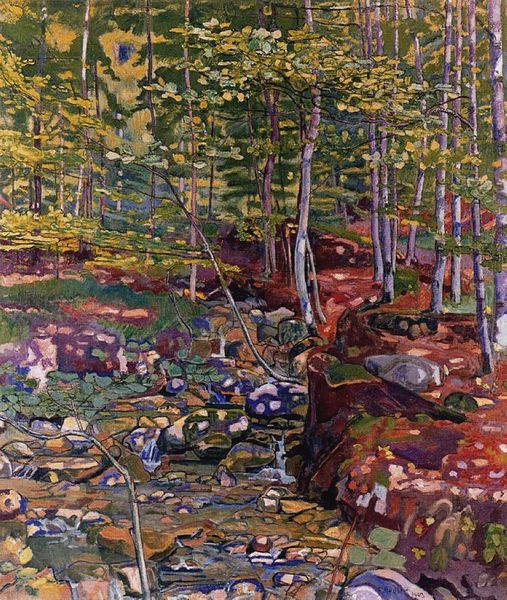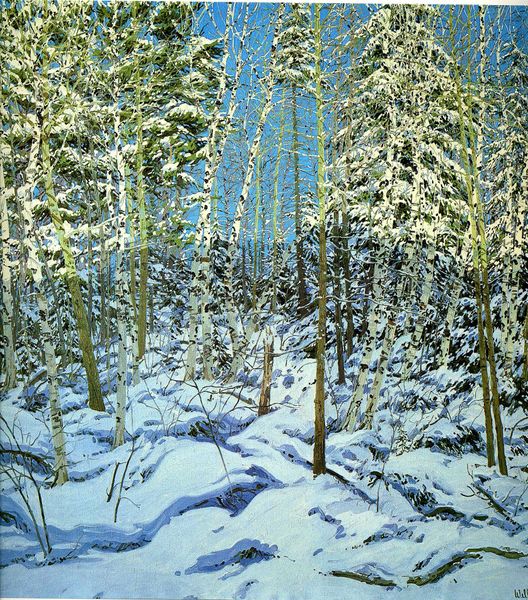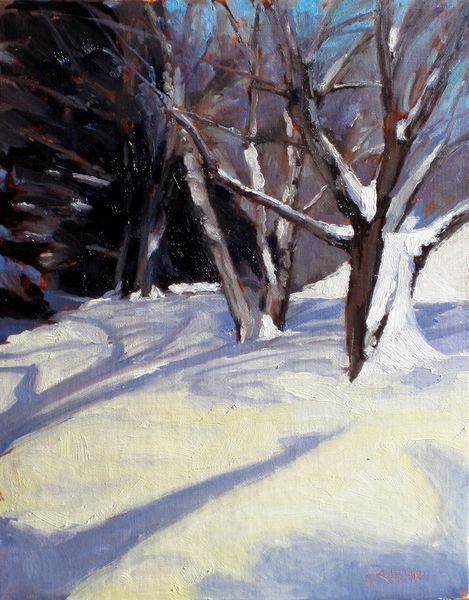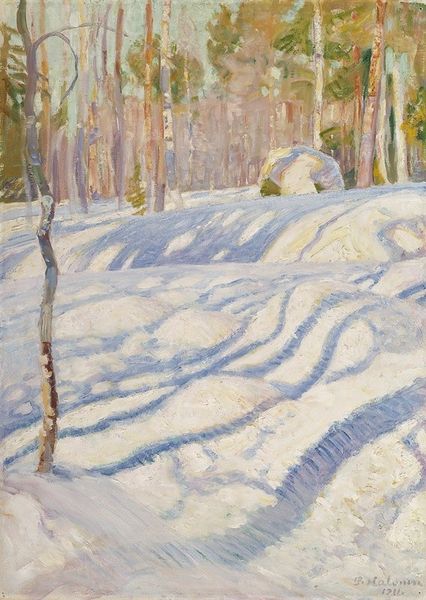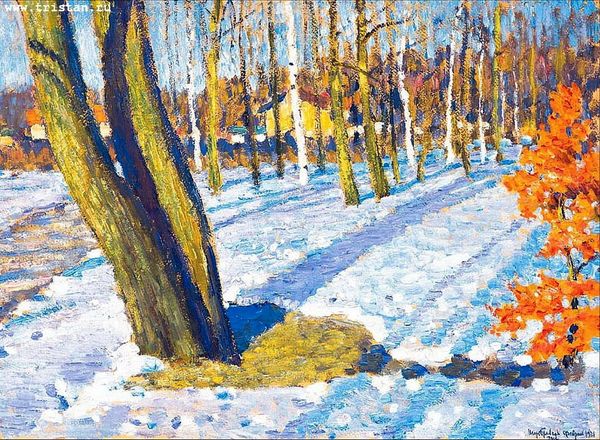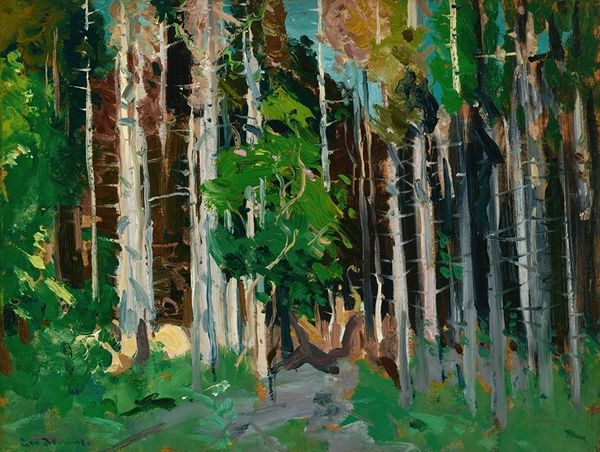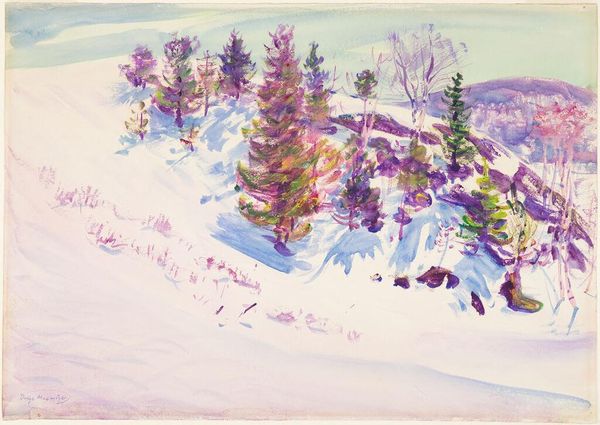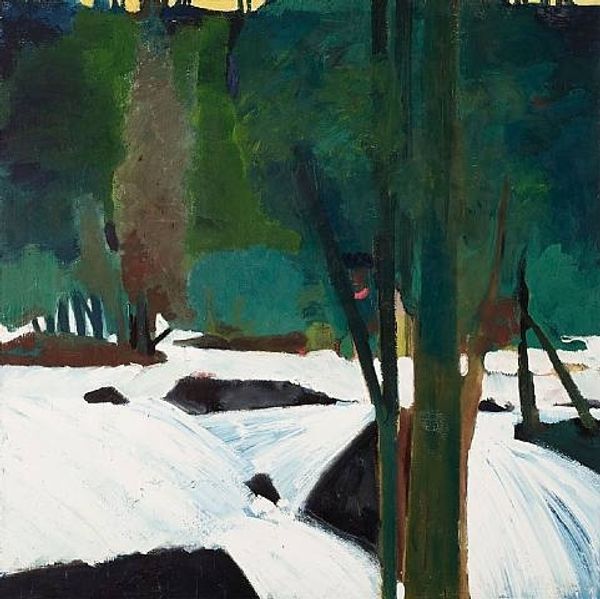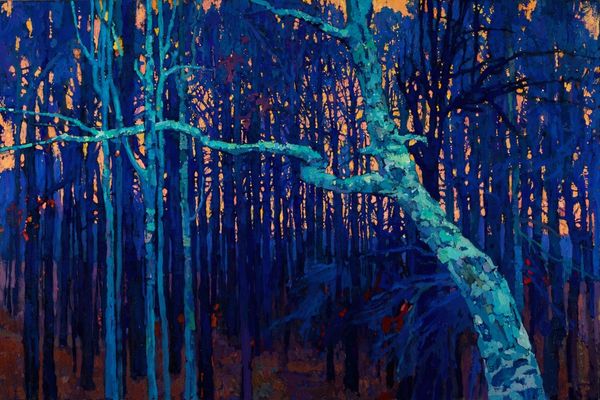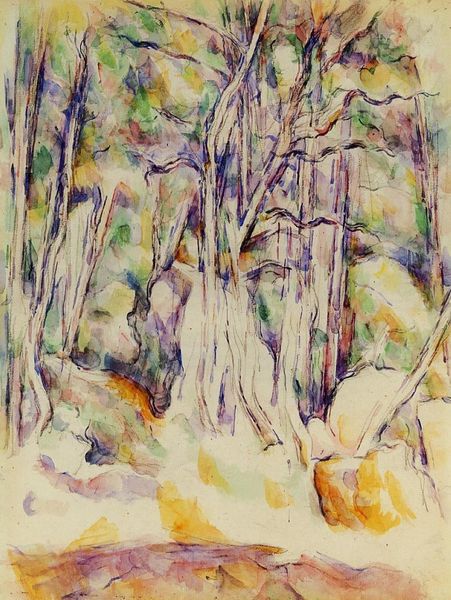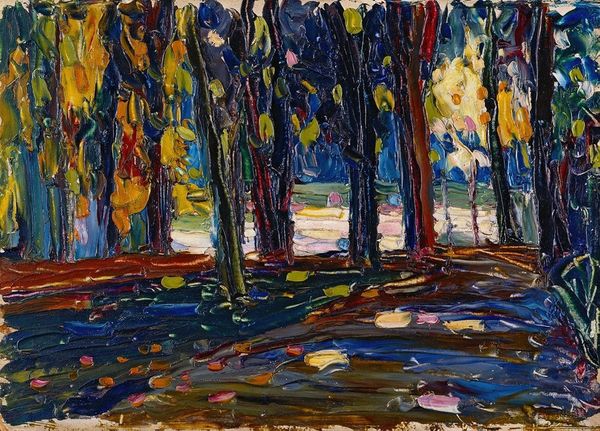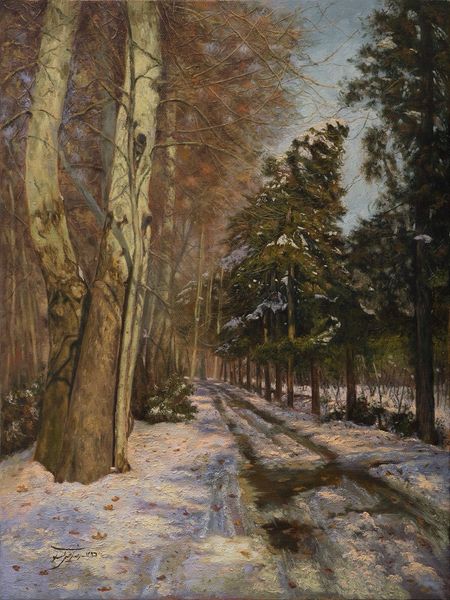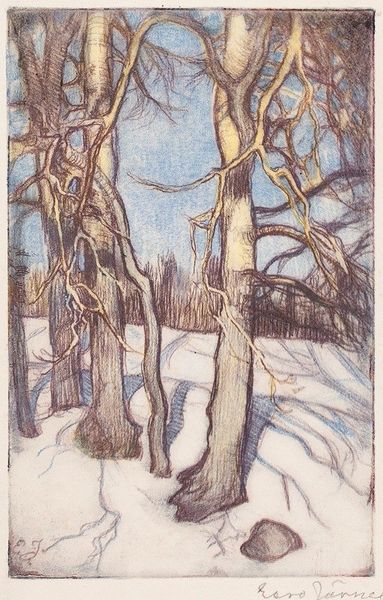
Dimensions: 28 3/4 × 38 5/8 in. (73.03 × 98.11 cm) (sight)41 1/2 × 51 5/16 × 2 13/16 in. (105.41 × 130.33 × 7.14 cm) (outer frame)
Copyright: No Copyright - United States
Editor: This is E. Ambrose Webster’s "Brook in Winter," painted in 1914. It's an oil-on-canvas landscape that immediately strikes me with its surprising color palette for a winter scene. It feels more joyful than bleak, which I wouldn't expect. What are your thoughts on the artist’s choices? Curator: For me, looking at "Brook in Winter" means considering Webster's relationship with material availability and the culture surrounding plein-air painting. Notice how the visible brushstrokes demonstrate a direct, physical engagement with the medium. What might the portability of oil paints on canvas in the early 20th century enabled artists to achieve? Editor: I see how he's really embracing the materiality of paint, almost like a record of his process right there on the canvas. It definitely makes me think about what it meant to paint outside, battling the elements, especially in winter. It sounds difficult! Curator: Exactly. How does the location dictate the color choice, perhaps in response to readily available pigments and the quickly shifting qualities of light? Also consider the distribution of these paintings. How were they acquired and consumed by the burgeoning middle class in America at the time? Does this alter our understanding of the value inherent in the work? Editor: That's a great point! I hadn't considered the consumer aspect of his work and how the location and materials might lead to the artist's style and ultimately saleability of his work. Now I see how understanding material availability, and its portability changes everything. Curator: Indeed, shifting the focus to materials allows us to appreciate the historical and socioeconomic conditions that enabled Webster to produce, and for us to view this "Brook in Winter" today.
Comments
minneapolisinstituteofart almost 2 years ago
⋮
E. Ambrose Webster was thrilled by the effects of light and was an attentive observer of nature. He was an influential teacher and spent a great deal of time as part of the Provincetown art colony, working in the open air among other artists and younger students. He was considered a leading modernist in American during the 1910s and exhibited in the Armory Show, a massive 1913 exhibition that introduced modern European artists to Americans in a large number. Brook in Winter shows Webster’s careful observation ofsunset effects on a winter day. He added slashes of purple and searing orange through the trees to give the feeling of the long rays of the sun transformed through the brittle forest.
Join the conversation
Join millions of artists and users on Artera today and experience the ultimate creative platform.
